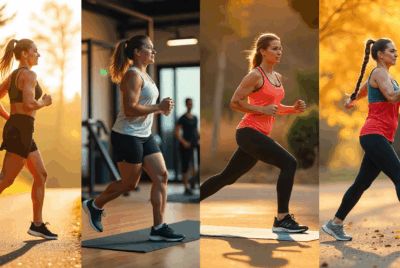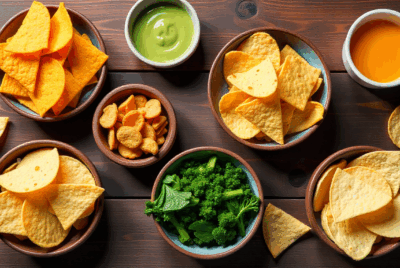7 Signs You’re in Ketosis (Without Pee Strips or Blood Tests)
Introduction: How Do You Know If You’re in Ketosis?
If you’ve recently started the keto diet, you might be wondering: Am I in ketosis yet? While pee strips and blood meters can give you technical answers, many people prefer to skip the tools and listen to their body instead.
The good news? There are clear, natural signs that indicate your body has entered ketosis—and you don’t need a lab or test strip to recognize them.
Here are 7 telltale signs you’re in ketosis—without using any gadgets or testing supplies.
1. You Have Fewer Cravings and Feel Less Hungry
One of the first signs that your body is using fat for fuel is a dramatic drop in hunger.
Why It Happens:
When you’re in ketosis, your blood sugar becomes more stable, and your body produces ketones, which naturally suppress appetite.
What to Watch For:
- Skipping meals without realizing it
- No more “hangry” feelings
- Forgetting to snack
2. You Notice a Boost in Mental Clarity
Many people report improved focus, productivity, and memory when they hit ketosis.
Why It Happens:
Your brain loves ketones. Unlike glucose, ketones offer a more stable and efficient source of energy, which can improve mental performance.
What to Watch For:
- Fewer brain fog moments
- Easier concentration during work
- Sharper recall and quick thinking
3. You Have More Sustained Energy
Ever feel that crash after lunch on a high-carb diet? Ketosis changes that.
Why It Happens:
Ketones provide a long-lasting fuel source, meaning you won’t experience those carb-driven energy dips.
What to Watch For:
- Energy that lasts all day
- Better stamina for workouts
- No need for mid-day naps or coffee refills
4. You Might Experience Temporary Bad Breath
It’s not glamorous, but it’s real: keto breath is a common sign of early ketosis.
Why It Happens:
Your body is releasing acetone, a type of ketone that can escape through the breath, causing a metallic or fruity smell.
What to Watch For:
- Unusual breath smell (often described as “nail polish” or “fruity”)
- Dry mouth
- Needing to drink more water
💡 Tip: Chewing sugar-free gum or staying hydrated can help.
5. You’re Losing Water Weight (Quickly)
Many new keto dieters see the scale drop within the first few days. This isn’t fat—yet—it’s water weight.
Why It Happens:
Lowering carb intake reduces insulin levels, which signals your body to release stored glycogen (and the water that comes with it).
What to Watch For:
- A few pounds lost in the first week
- More frequent urination
- Rings or clothes fitting looser
6. You May Feel “Different” for a Few Days
A short adjustment period, often called the keto flu, can signal that your body is transitioning into fat-burning mode.
Why It Happens:
Your body is shifting from using carbs to fat. This causes a temporary imbalance in electrolytes and hydration.
What to Watch For:
- Fatigue
- Mild headaches
- Irritability
- Brain fog (followed by clarity)
💡 Tip: Stay hydrated and supplement with magnesium, sodium, and potassium to ease symptoms.
7. You’re Dropping Inches (Even If the Scale Is Stubborn)
Sometimes, the scale stalls even though your body composition is changing.
Why It Happens:
As your body taps into fat stores, you may lose inches in your waist, arms, thighs, and even your face—before the scale moves.
What to Watch For:
- Clothes fitting better
- Face looking leaner
- Visible change in waistline
How Long Does It Take to Enter Ketosis?
One of the most common questions keto beginners ask is: “How long does it take to get into ketosis?” The answer depends on a few factors—but most people enter ketosis within 2 to 7 days of dramatically reducing their carbohydrate intake.
Here’s a rough timeline:
- Day 1–2: Your body begins to deplete stored glycogen (carbs stored in your liver and muscles). You may feel sluggish or hungry.
- Day 3–4: Ketone production ramps up. You might notice signs like fatigue, brain fog, or mild dehydration—known as the “keto flu.”
- Day 5–7: For most people, ketosis is in full swing. Appetite may drop, energy levels stabilize, and mental clarity kicks in.
Factors That Affect How Fast You Enter Ketosis:
- Carb intake: The lower your carbs (ideally under 20–30g net), the faster you enter ketosis.
- Activity level: Exercise depletes glycogen faster, helping your body switch to fat-burning sooner.
- Your metabolism: Everyone’s body responds differently based on age, hormones, and metabolic health.
- Previous carb intake: If you’ve been eating a high-carb diet, it may take longer to fully adapt.
Pro tip: Incorporating intermittent fasting, MCT oil, or light cardio during your first week can help accelerate your entry into ketosis.
Summary: Ketosis Without the Test Strips
| Sign | What It Means |
| Less hunger | Ketones are suppressing appetite |
| Mental clarity | Brain is running on efficient ketone fuel |
| Steady energy | Body is burning fat, not sugar |
| Keto breath | Acetone is being released |
| Initial water weight loss | Glycogen stores are depleting |
| Temporary fatigue (Keto flu) | Your body is adjusting |
| Losing inches | Fat loss is happening, even if slow on scale |
What to Do If You’re Not Seeing These Signs
If you’re not experiencing any of these, don’t worry—it can take 3–7 days to enter ketosis, depending on your:
- Carb intake
- Activity level
- Metabolism
- Sleep and stress levels
Stick with the basics:
- Keep carbs under 20–30g net/day
- Eat moderate protein
- Prioritize healthy fats
- Drink water and get electrolytes
FAQ: Understanding Ketosis Without Test Strips
1. How long does it take to enter ketosis?
Most people enter ketosis within 3–7 days, depending on their carb intake, activity level, and metabolism. To speed things up, keep your net carbs under 20–30g per day and support your body with exogenous ketones to help ease the transition and reduce keto flu symptoms.
2. What is “keto flu” and how can I prevent it?
Keto flu is a group of symptoms (fatigue, brain fog, irritability) that occur as your body shifts from burning carbs to fat. Combat it by staying hydrated and replenishing electrolytes. We recommend adding a quality electrolyte mix like LMNT Recharge Electrolytes to your daily routine.
3. Do I need to track ketones with strips or meters?
Not necessarily. Your body gives off several natural signs of ketosis—like reduced hunger, mental clarity, and stable energy. However, if you’re curious, a breath ketone meter is a non-invasive option.
4. What are good fats to eat on keto to stay in ketosis?
Stick to healthy fats like avocado, olive oil, coconut oil, ghee, and fatty fish. A great option for on-the-go is MCT oil, which can be added to coffee, smoothies, or salad dressings.
5. How do I deal with bad breath during early ketosis?
“Keto breath” is caused by the release of acetone. It’s temporary! Stay hydrated, chew sugar-free gum, and consider chlorophyll drops or natural breath sprays to freshen up.
6. How can I tell if I’m losing fat if the scale isn’t moving? Track inches lost instead! Use a body measuring tape and take weekly progress photos. Keto often shifts body composition before the scale changes.




